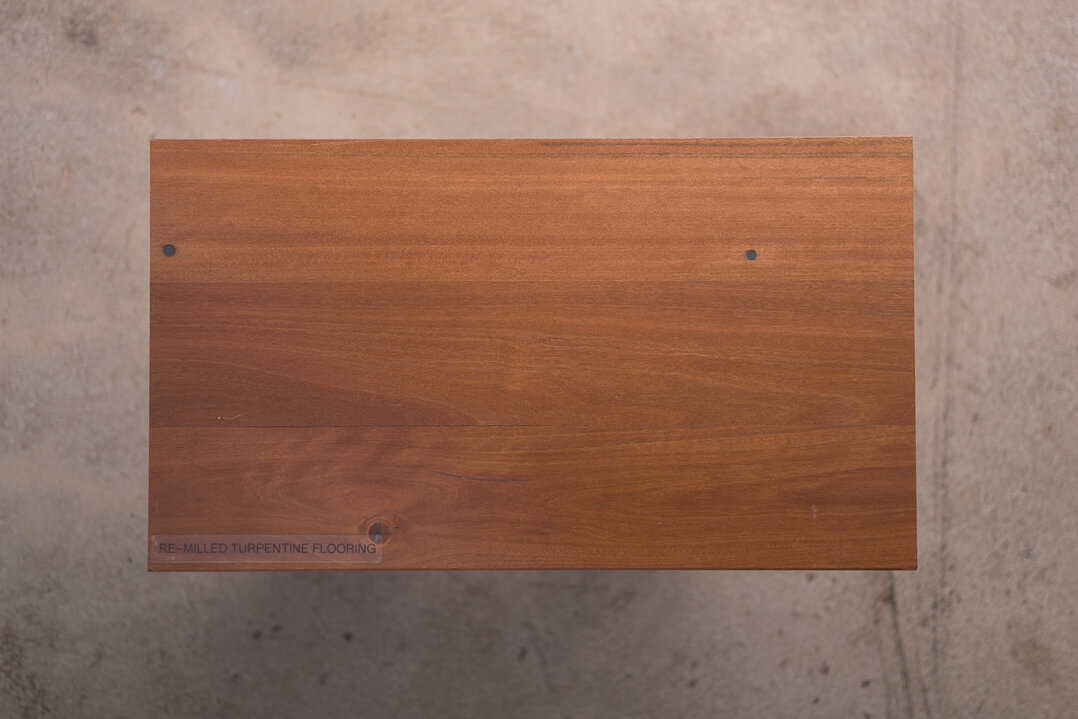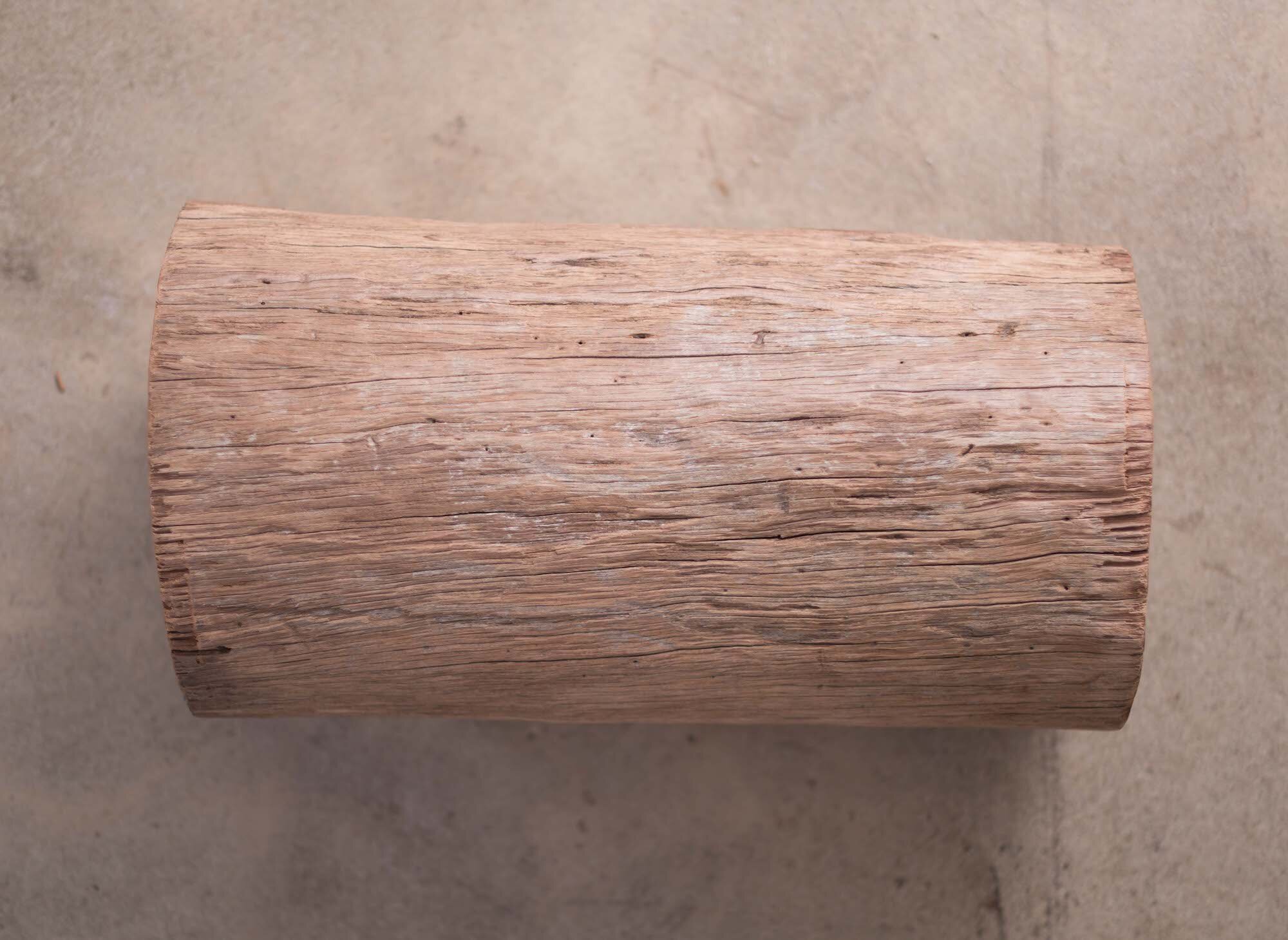Turpentine
[Image 1: Re-milled turpentine flooring. Image 2: Wirebrushed turpentine wharf pier]
RECYCLED FROM Small amounts are found in structural timbers from houses, factories and buildings in NSW & QLD. Turpentine’s resistance to marine borer meant it was the predominant timber used for wharf piers.
TIMBER KNOWLEDGE Turpentine came from the east coast forests from Sydney to Cairns. It is a reddish brown in colour and despite its name is not particularly high in natural resins and is very difficult to burn. Another durable, hard Australian Hardwood!
The section of the old wharf pier that was driven into the mud is usually well preserved and has almost no decay. Above the mud, and especially in the tidal zone the timber is often eaten away by the teredo worm and other marine organisms. This can make a very interesting patterns in the timber.
Turpentine: Syncarpia Glomulifera
USES We rarely receive large amounts of Turpentine as a structural timber so anything recycled from buildings usually goes into our Mixed Dense Reds mix.
We recycle old wharf piers and we usually supply these for playground log steppers, landscaping and structural round posts.
On occasion we have milled wharf piers and kiln dried the timber to make a very unusual floor board, but we rarely find the high quality, large section poles which make this cost effectiive.
NATURAL DURABILITY (approximate rating for the expected life of untreated and unfinished timbers exposed to the weather)
In Ground: Class 1 ( >25 years) Above Ground: Class 1 ( >40 years)
HARDNESS 8.6 kN (Janka scale)
DRY WEIGHT 990kg / cubic metre


